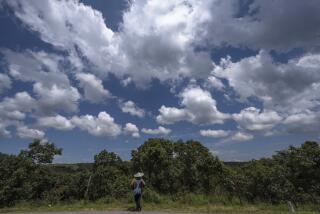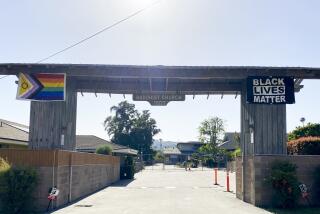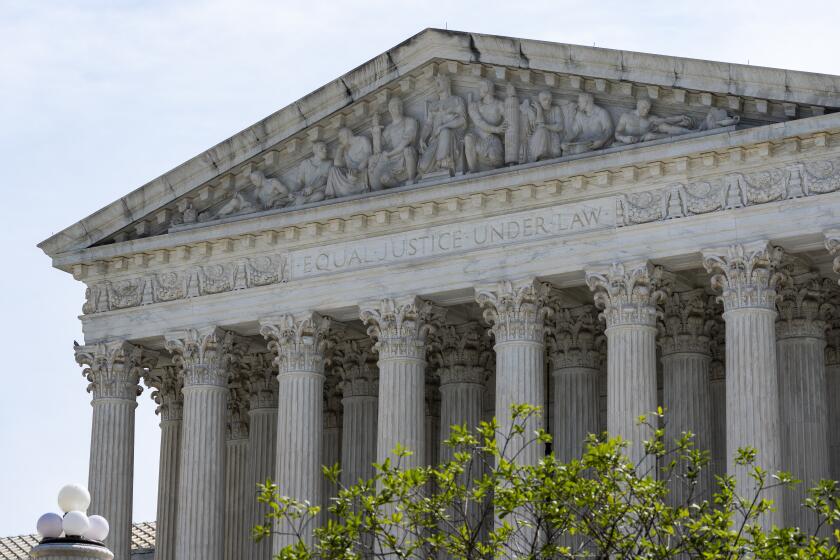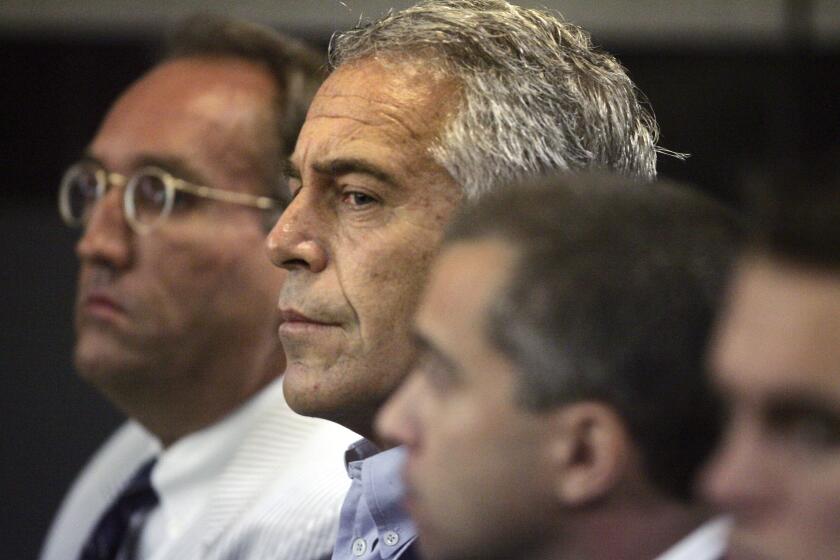Ancient Ritual Is Performed at Buddhist Temple
- Share via
With flames leaping skyward and white smoke billowing from cypress branches, Buddhist priests clad in yellow and purple robes captivated more than 2,500 spectators Saturday in Yorba Linda, chanting sacred mantras to the music of shakujo bells.
The rhythmic beat of giant taiko drums echoed across the Shinnyo-en temple’s field on Bastanchury Road, where the crowd witnessed the spectacular Saito Homa, an ancient Buddhist fire ritual that was performed in the United States for the first time last week.
“It is a great opportunity for people who live here to be a part of this,” said temple official Naruhiko Yoshida. “It is wonderful to see people from this country, Europe and Japan, from all over the world, harmonizing in front of Buddha.”
The tradition was started by Shobo, a monk who lived in the mountains of Kyoto, Japan, in the 9th century. It is conducted annually in Japan but until Friday and Saturday had never been performed in this country, Yoshida said.
Practitioners of this branch of esoteric Buddhism follow the last sermon of Buddha, which places great emphasis on peace, love and universal brotherhood.
The ritual took place on a dais in front of a statue of Buddha and was presided over by Shinso Ito, a Shinnyo-en leader. The ceremony began with rites meant to sanctify the surrounding area.
One priest performed the rite of the hallowed sword by wielding a gleaming silver blade swiftly in the air as he let out war cries to signify driving away and defeating evil spirits.
Priests then lit the mound of cypress branches with torches and fed the fire with prayer notes mailed to Yorba Linda by followers around the world.
“We believe that the fire carries these prayers to Buddha,” said Yoshida.
The conflagration, he said, also signifies the flames of wisdom burning away what are referred to as the “three poisons”: greed, anger and ignorance.
Followers said the ritual is a prayer for world peace.
“The world needs a lot of purification,” said Ivan Sato of Gardena. “We need to understand one another and be able to work together.”
More to Read
Sign up for Essential California
The most important California stories and recommendations in your inbox every morning.
You may occasionally receive promotional content from the Los Angeles Times.













